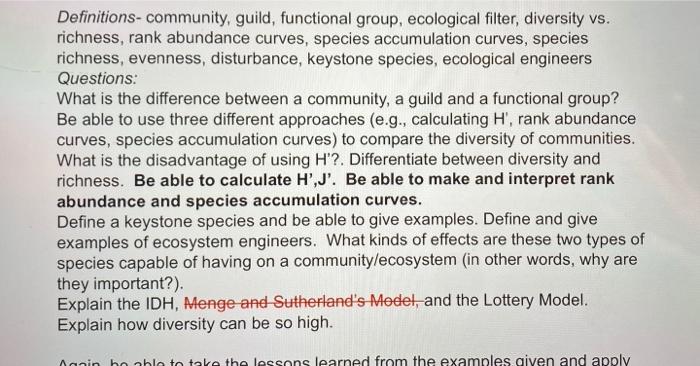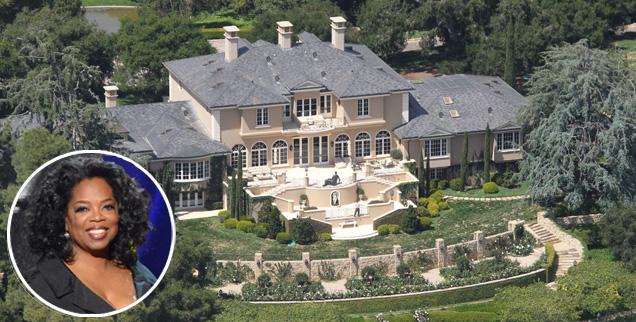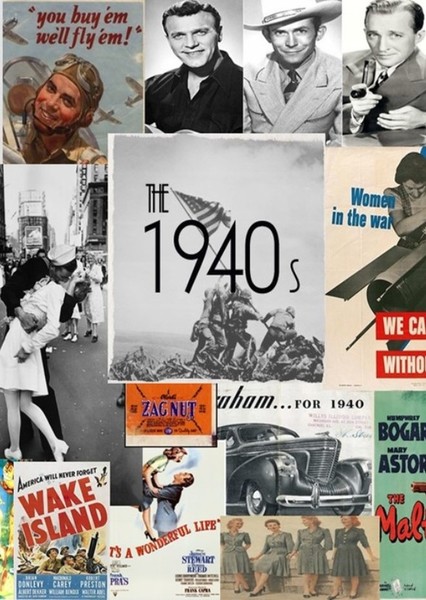
The American dream isn't freedom from morals nor freedom from government. The purpose of government is to constrain people and limit their freedom, not free them. The main purpose of government is to restrict people and limit their freedom, not make money. The American Dream, in the end, is not a utopia. Before we can make decisions about how to live our American Dream, we have to first consider its meaning. Here are some important points:
Influence
Since the beginning of America's existence, the American dream has been cherished for centuries. Every generation brought with itself an uprising of ordinary Americans fighting for the ideal. While the American dream's ideal is still deeply rooted into American culture, there have been many changes to the dream over time. The Colonies, the founding fathers of America's first republic, used the American Dream as a guideline during the many wars that ensued.

Meaning
The American dream is a concept derived from the idea of personal happiness and material comfort, and is often described as the pursuit of marriage, two children, and a three-bedroom house surrounded by a white picket fence. It originated as a concept aimed at immigrants, but today it is generally aspired to by everyone, from the very poor to the super-rich. The idea behind it is that Americans can live well, but that they also need to be compassionate and help others.
Changes
Changes to the American dream are a part of the evolution of America. To describe the freedom that America enjoyed from British rule, the term "upward social mobility" was first used in 19th century. All over the world, immigrants arrived in the United States to seek new opportunities and escape from the poverty of war-torn Europe. While immigrants from all walks of life were not created equal, the American dream was universal for many.
Criticisms
Critics of the American Dream argue that it is too materialistic and consumerism-driven. While the notion of accumulating wealth is desirable, it fails to account for the fact that there is more to life than that. Economists use the concept gross domestic product to measure their success. The American Dream isn't a myth. It evolved and must adapt to changing times. The 'American Dream' can be achieved without materialism or inequity, but only if one has the right skills, ambition, and dedication.

Reversal
You may be interested in learning more about the American dream's reversal. Although there are many factors that can contribute to this phenomenon the most prevalent is absolute mobility. To maintain the "American dream," growth must be more evenly distributed throughout the income distribution. The chances of realizing the American dream are greater for those who have the same opportunities as those born to different socioeconomic backgrounds.
FAQ
How can I incorporate pop culture into my marketing strategy?
To understand how to use pop culture in your marketing strategy, you need to look at the trends within it.
Let's suppose you wanted to promote the release of a new film. What type of promotion could you offer?
You could create a trailer with clips taken from the film. You could even find a clip that features one of your products or services and includes it in the video.
Perhaps you could make a parody of the trailer with other films.
If you were promoting a product or service that related to the film's theme, then you could create a promotional campaign based on the movie's plotline. A product that supports astronauts' health while traveling through outer space might be an example of a product you could advertise.
Promotions could be run based on the plotline if you have a business that is related to the movie's themes. If your company sells food products, you might offer customers free samples if they buy tickets to the movie.
What is the popular music culture?
Popular music culture is a dynamic phenomenon that can take many forms.
The popular music culture is defined by the use of certain musical styles (e.g., jazz, rock) as well as lyrics. It also covers the influence of visual media like film, television, fashion advertising, and so on, on artists' careers as well as public perception.
It's also all about how fans interact their favorite artists.
Popular music culture has one element: the rise of "superstars", artists who have gained fame and fortune.
These celebrities often transcend genres to become cultural icons. The evolution of popular culture has been influenced by their popularity.
Some other elements of popular music culture are:
* The rise recording technology – from acoustic instruments up to electric guitarists and microphones.
* Invention of the record player and radio
* The dawn of rock 'n' roll;
* The introduction of TV and film;
* The birth MTV and VH1
* The creation or the Internet.
How can we avoid the dangers posed by pop culture?
We need to recognize when pop culture influences us. Then, we need to ensure that we are not being influenced. Here are ways to help you stay away from bad influences:
-
Avoid watching violent TV shows like Game Of Thrones.
-
Don't spend time surfing the Internet. Read books instead.
-
You should watch less TV. Spend your time doing activities that are healthy.
-
Take care of what you post online. After comments have been posted, they can't be deleted.
-
Check that websites you visit remain safe. Before entering personal information, ensure that they are checked.
-
Do not allow anyone to force you into doing anything dangerous.
Talk to an adult about if you think you might be addicted to pop culture. You can contact your local library, or the National Center For Missing & Exposed Children (1-800-583-LOL).
How did pop culture develop?
Technology drove the development of popular culture. It developed as people became increasingly mobile. The radio was the first to allow mass communication. This allowed for the rise of television and the birth of the internet.
People began using computers at home, and were then exposed to computer games. These games were played on consoles like the Nintendo Wii and Sony Playstation 3. They are now free to download online. Many young people now prefer video games to watching television.
Video games are extremely popular with teenagers and kids. These games can be played by one person or with others via the internet. Call Of Duty and Grand Theft Auto games are very violent. These games can cause serious harm to children, so parents should be concerned about their children. Others find it thrilling to watch what happens when one of their characters dies.
Music videos are another way in which pop culture influences youth. They feature celebrities and information about current trends. Young people enjoy watching them. It is clear that music plays a significant role in our lives.
Music videos are often made by artists who add special effects to their songs. Rappers often use makeup and hair wigs to enhance their looks. Others put themselves through extreme physical demands to show off their bodies. Many singers sing wearing costumes.
Today there is so much music to choose from. You can listen to whatever you like. This is not always good news. Sometimes music can encourage violence. People are often angry when they hear certain songs or words. Sometimes, they even do crimes.
50 Cent was one of the victims. A line in his song Get Rich Or Die Trying reads: "I'm gonna shoot a mamafucker down / It's not clear why but it might." Some people thought that this song meant that he would cause death. A man threatened to kill him, and called him. So 50 Cent changed the lyrics. Now it only says: "I'll shoot a bitch down/ I don't know why but I just may."
Popular culture is essential. We need to understand how it affects us. If we don’t understand how it affects us, we won’t be able prevent its harmful effects.
What are the examples of pop-culture in 2021
Two hijacked planes crashed into the Twin Towers of New York City's World Trade Center on September 11, 2001. This day would become known as 9/11.
These events have had a profound impact on popular culture, and they continue to have an influence today. It is easy to see how this event has impacted our lives in many different ways.
This includes television shows such as 24 and movies such as United 93, which tells the story of what happened during the flight from Boston to Los Angeles on 9/11. You can also find books such as The Forever War, by Dexter Filkins.
Everyone can remember exactly where they were when the attacks occurred. Some people got out of bed and went outside; others watched the TV or read newspapers.
Pop culture is constantly evolving. Pop culture provides inspiration and reflections society. What will happen to popular culture in the next year? We don't yet know. We know that it will be different from what it was before.
What is pop media culture?
Pop culture is all around. It is everywhere we go: TVs, radios and films, music, magazines, newspapers and websites, as well as social networks. It is everywhere we go, 24/7. It affects everything from music to clothing and food to politics and religion. What then is pop culture? Wikipedia states, "Popular Culture (or Popular Culture) is the mass production of ideas and products for mass consumption." Many believe this applies to entertainment such as movies, TV, music and fashion. Pop culture does not only include entertainment. The term covers everything consumed by the masses. It includes video games, sports and toys, fast food, political campaigns, and many more.
What examples are there of pop culture?
Pop Culture is a 21st-century art form. It encompasses all forms of popular entertainment, from music, film, TV, video games, fashion, advertising, comics, etc. In his 1985 book, Amusing Ourselves Too Death (1985), Neil Postman first coined this term. Pop was a method of mass communication using cheap tricks and formulaic techniques to create an illusion that spontaneity and uniqueness.
However, he noted that most people do not experience true enjoyment because they have become conditioned to seek media experiences that make them feel superior to others. He also said that this kind of cultural expression contributed to the decline of critical thinking skills in young adults.
Pop culture is also known as consumerism or popular culture.
Statistics
- Yet a Nielsen study shows they account for 42% of the country's most-watched content on streaming services. courtesy Nielsen (npr.org)
- According to CNBC.com, “more than 70% of the film's revenue came from countries outside the US” (https://www.cnbc.com/2019/01/08/aqua...nal-sales.html, ret. 8/18/19). (socialsci.libretexts.org)
- Less than a decade later, that statistic rose to 90% (Dager, n.d.). (socialsci.libretexts.org)
- According to Dictionary.com, popular culture, or low culture as it is sometimes referred to is comprised of the “cultural activities or commercial products reflecting, suited to, or aimed at the tastes of the general masses of people” (7/21/19). (socialsci.libretexts.org)
- Recently, the market share across Western Europe has ranged from 60-75% (Hopewell, 2013). (socialsci.libretexts.org)
External Links
How To
What are some of the most famous pop culture references you can think of?
In the 1960s, Americans were obsessed with space travel. Star Trek was the most famous TV series of that era.
From 1966-1969, the original series aired at NBC. The series starred William Shatner playing Captain Kirk, Leonard Nimoy portraying Mr. Spock and DeForest Kelley portraying Dr. McCoy. James Doohan played Scotty. Majel Barrett Roddenberry was Uhura. Nichelle Nichols was Lieutenant Nyota Uhura. Walter Koenig was Pavel Chekov. Grace Lee Whitney was Yeoman Janice Rand. (Wikipedia)
In 1967, Paramount Pictures released the first feature movie based on the series. Paramount Pictures released the movie, "Star Trek". Robert Wise directed the film, which featured an ensemble cast, including William Shatner (Leonard Nimoy), DeForest Kelley (James Doohan), Walter Koenig and Majel Barrett. Roland Nichelle Nichols. George Takei and Grace Lee Whitney. (Wikipedia)
In 1968, the second season started airing on television. This season was about the crew going back to 1969. (Wikipedia)
The third season of the television series was broadcast in 1971. This season introduced a new character named Commander Richard A. Morn. He was a Starfleet Officer who was born in 2063 on Earth. (Wikipedia)
A live-action spinoff of Star Trek: Planet of the Apes was also produced during this period. It aired between 1972-74. (Wikipedia)
The fourth season debuted in 1973. The fourth season featured two new characters, Ensign Ro Laren (Lt. Ilia) and Ensign Ro Laren (Ensign Ro Laren). Both were played by Marina Sirtis. (Wikipedia)
The fifth season of the television series was broadcast in 1975. It was the last series to air before the franchise went out of business. (Wikipedia)
After the television series was canceled, several attempts were made to revive it. One of those was the 1977 pilot episode, "Where No Man Has Gone Before," that failed to find a network partner or studio partner. (Wikipedia)
Star Trek: New Voyages also aired as an animated series in 1998. It lasted only 13 episodes. (Wikipedia).
The sixth season of the television series was returned to TV in 2009 after a seven year hiatus. It was entitled "Enterprise". It ran for five seasons until 2013. (Wikipedia)
Three feature films were also made during this time. The first was released in 1979. It was called Star Trek: The Motion Picture. Nicholas Meyer directed the film. It starred William Shatner and James Doohan as well as Leonard Nimoy and Walter Koenig. Majel Barrett Roddy and Ricardo Montalban were also featured in the film. (Wikipedia)
The following two movies were released respectively in 1982 and 1987. They were called "Star Trek II: The Wrath of Khan" and "Star Trek III: The Search For Spock". Nicholas Meyer directed both of these movies. (Wikipedia)
2001 saw the premiere of the seventh season. It was entitled "Encounter at Farpoint". It was the first episode of the show's history without guest stars. (Wikipedia)
In 2005, the final episode of the series aired. It was entitled "All Good Things ...".". It was written by Ronald D. Moore. David Livingston directed the film. (Wikipedia.)
Star Trek TV's 2008 premiere saw the debut of a new show called "Trek Nation". It was called "Trek Nation". It's currently being broadcast on CBS. (Wikipedia). "Trek Nation" tells the story of a group of people who come from diverse backgrounds and form their own version of United Federation of Planets. Their goal is peace on other planets. (Wikipedia). "Trek Nation", an intriguing concept, shows how diverse people can work together and create good things. (YouTube Video)
It's worth reading books on Star Trek's timeline. Gary Wolfe's "Star Trek Chronology", is a good place to start. There are many more books available online.